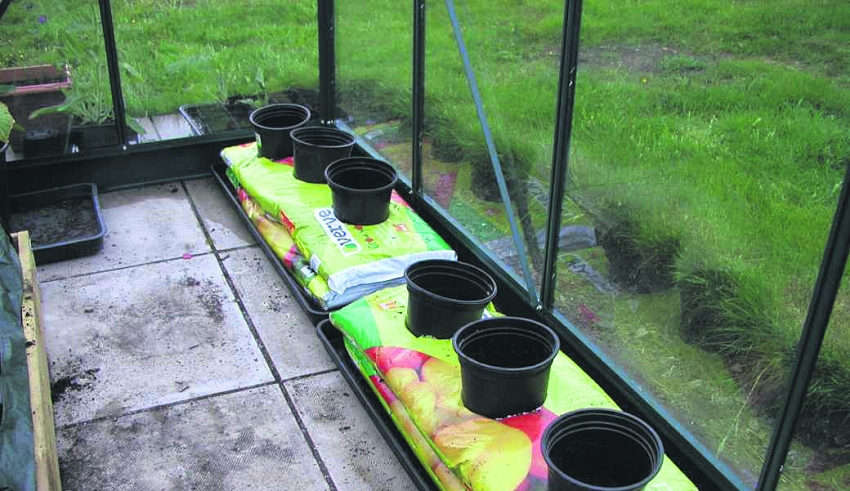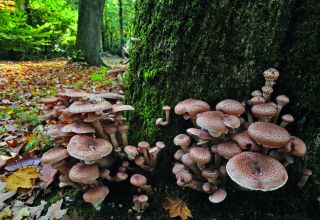
Garden centres are now bursting with piled high choices for compost, but how do you make the right choice for the right gardening task?
We take it for granted that we can call in at the garden centre and pick up a bag of compost for sewing seeds, potting plants, filling tubs and hanging baskets.
But things haven’t always been so easy.
Victorian gardeners had to make their own compost using a different mixture for virtually everything they grew in their greenhouse.
It wasn’t until after World War II that standardised composts started to appear and not until comparatively recently that we’ve had the wide range of brands that are available today.
Any plants grown in pots or other containers will need compost to support their roots. Garden soil is too variable and often contains undesirables, such as weed seeds, pests or diseases, so most gardeners will buy bags of compost from a garden centre at the start of the season.
The compost that we buy in bags is different from the compost that we make by rotting down garden and kitchen waste in a compost bin – the material is better suited to mulching the surface of the soil or for digging in.
Composts for growing young plants are the kind most people will be after.
Seed compost is for potting and repotting plants that already have proper roots. And multipurpose compost does both jobs though if you use it for potting, you’ll need to start feeding sooner than usual.
The John Innes connection
You can choose between composts made from different main ingredients – soil, peat or peat-free.
Soil-based compost means one of the John Innes range. There’s a John Innes seed compost and John Innes 1, 2 and 3, which are potting composts containing progressively more feed, to suit larger plants in bigger pots. The idea was that you’d pot young plants into ‘1’ then, a year later, repot them into ‘2’ and, finally, a large pot filled with ‘3’ where they’d stay for a couple of years.
Soilless composts always used to be made of peat, but all sorts of wildlife habitats were being stripped of the stuff and the resulting outcry rightly forced makers to look for alternatives. There are still a few peat-based composts around and you’ll see reduced peat compost, which is a mixture of peat and peat-free, but ecologically speaking it’s time to move on.
The first peat-free composts were very variable, but now makers have had time to do the same sort of research that originally went into peat composts, so you can use them with every confidence. Peat-free composts are made from all sorts of waste ingredients, whether it’s green refuse from National Trust gardens or composted bark.
Tips and tricks
- Avoid buying compost with faded packaging as it’s likely to be old stock. Ingredients such as bark decompose, upsetting the nutrient balance and may even produce chemicals such as ammonia that are toxic to plants. For the same reason, it’s best not to store bags of compost from one year to the next.
- When buying compost for patio pots and hanging baskets, it’s cheaper to use compost from a growing bag rather than a conventional bag of multipurpose.
- You can save money when planting up patio pots and hanging baskets by re-using container and growing bag compost at least twice, provided the plants previously resident were healthy.
- The easiest way to feed patio pots and hanging baskets is to mix a slow-release fertiliser into the compost when you plant them up as this will feed your plants all summer.
So what compost fits what job?
Multi-purpose compost
These all-purpose mixes cater for a host of uses – including sowing large seeds, pricking out seedlings and planting-up pots, containers and hanging baskets. Don’t use it to sow small seeds though: quality in this compost is important so don’t buy cheap. Expect bags of multi-purpose to contain around 40-70 per cent peat.
Peat-free multi-purpose compost
Peat may be controversial but is still regarded as one of the best ‘ingredients’ for raising plants. In recent years, concern has escalated over its use, with a growing band of gardeners arguing that peat is best left in bogs. Today’s eco-friendly mixes have come on in strides, although extra care may be needed with watering and feeding. For best results, opt for a bag from a well-known manufacturer.
High-peat multi-purpose compost
Many gardeners swear by peat, with some arguing that it is a renewable resource. It’s light, free-draining and is an excellent growing medium for plants. To meet this demand, manufacturers are introducing more high-peat multi-purpose composts, which should offer great results.
Sowing seeds compost
Choosing the right compost to make your seeds burst into life is critical. That’s why its best to opt for a seed compost for germinating seeds, especially small ones. A good seed compost will coax flower and vegetable seeds into life; helping young seedlings to develop strong roots.
Containers and hanging baskets compost
Containers and hanging baskets can need a specific pot and basket compost. The key ingredient in most of these products is a water-retaining gel, which soaks up moisture when you water and releases it direct to the roots as the compost starts to dry.
 Growbags
Growbags
Growing bags contain a specially-formulated blend of compost, nutrients and water-retaining gel. They’re ideal for tomatoes, cucumbers, peppers, strawberries, courgettes and salad crops. Choose the biggest, fattest bag you can find: the fatter the bag, the more compost it contains and the deeper your plant’s roots will be able to go. Cheap, thin bags can dry out quickly on hot summer days, with serious consequences for developing fruit and veg.
Pricking out – Seedling compost (John Innes No.1)
Once your seeds have germinated and are growing well, you’ll need to prick them out them out before they become tall and spindly. You can use multi-purpose, but a low-nutrient seedling compost is better, and is ideal for cuttings that have rooted. A good seed compost will contain sufficient nutrients for the first two to four weeks of use.
Ericaceous compost
Plants such as rhododendron, azalea, camellia, acer, magnolia, skimmia and heather need something a bit different. They are choosy about what they put their roots into, detesting soil with lime in it, and they must have acidic growing media. Ericaceous compost is the name given to blends that are suitable for acid-lovers.
Potting-on compost
When young plants are ready to be transferred into bigger pots, look for a potting-on compost – such as a John Innes No. 2.
These will contain sufficient fertiliser to keep your plants fed for up to six weeks, encouraging them to produce healthy top-growth and strong root systems.
Best of the rest
House-plant compost is multipurpose compost in small bags, especially for people who only need a little at a time.
Tree-planting compost is a soil improver for working into the ground before planting trees and shrubs as an alternative to garden compost. Don’t put it in pots – use John Innes No 3 for trees in tubs.
Cactus compost is a gritty, free-draining mixture designed for succulents.
Orchid compost is usually bark-based, very coarse and open textured, for orchids and other epiphytic plants.
Only buy as much compost as you can use within six to eight weeks, and seal after use to stop bugs and weed seeds getting in.
Peat-based versus peat-free compost – Peat has been the main ingredient of composts for the last 50 years, but environmental concerns, first over the effect of its extraction on habitats and, more recently, on the carbon footprint, has led to the search for alternatives. Coir, bark, wood waste and green waste are examples of materials that have been used either to reduce the amount of peat or to replace it. Trial results using these materials have been variable, but Which? Gardening now has Best Buys for growing plants in containers that are peat-free. The Government has set a target for all composts on sale to home gardeners to be peat-free by 2020.










